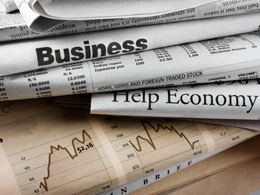 I’m reading a very good book by investor Howard Marks titled The Most Important Thing. I’ll write a full review later, but today I want to focus on one of the book’s key points: the importance of second-order thinking.
I’m reading a very good book by investor Howard Marks titled The Most Important Thing. I’ll write a full review later, but today I want to focus on one of the book’s key points: the importance of second-order thinking.
Second-order thinking and current trends
Say a company launches a successful new product. First-order thinking would dictate “Let’s buy!” Second-order thinking would ask “Has everyone already bought on this news? Who doesn’t know about this? Who is left to buy?” Based on that line of thought, you might end up selling the stock, despite the exciting new product.
This is the same rationale encapsulated in the Wall Street motto “Buy on the rumor, sell on the news.”
Why do I bring this up? I’ve had several conversations recently with investors who are worried about certain trends—namely, lower oil prices, the strong dollar, and the higher U.S. savings rate. I have to point out that, not that long ago, we were all very concerned about the exact opposite:
- Consider the rising U.S. savings rate, which is slowing consumer spending growth. Last year, analysts were decrying the fact that consumers were still overindebted and not saving enough.
- Consider lower oil prices. Last year, it was feared that higher oil prices would strangle the U.S. recovery.
- Consider the strong dollar. Last year, many said the dollar was on the verge of collapse.
I suspect that our current array of concerns, in most cases, will also reverse in the next couple of years or so. As investors, the question is, how we can take advantage of this?
When trends reverse
Let’s think through some consequences of current trends, and how we may be able to make money off a reversal.
With the strong dollar, there are some obvious opportunities to make potential profit. Consider buying foreign investments in local currencies. Today’s strong dollar means you may get a cheaper price, and if trends reverse, you should get currency gains along with the return on the actual investment. Many European investors are doing the opposite trade right now, hoping to enjoy the same benefits in reverse.
With low oil prices, the path is more indirect. We’ve seen many small and mid-size companies get into financial trouble in the energy industry as oil prices have dropped, and I suspect the advantages will accrue to the larger companies that are now in a position to consolidate and pick up assets on the cheap from those troubled smaller companies. Now might be a good time to consider looking at the largest and most stable companies in that sector.
Finally, the rising savings rate for U.S. consumers is only building support for later spending. Consumer stocks have done well, but rising household net worth and wage income suggests that may well continue. In my view, the short-term slowdown in spending is more of a down payment on faster spending later.
As always, we will see what happens. All of these trends could continue, and for longer than anyone expects. But it’s always worthwhile to think about how things that “everyone knows” may, in fact, reverse. After all, it happens all the time.


 Print
Print



